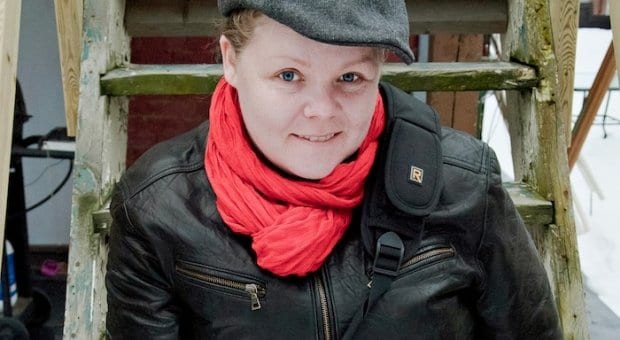As Russia gears up for the Olympics, Toronto photographer Kristy Boyce will be quietly setting up shop in St Petersburg and embarking on the latest and riskiest endeavour of her What Dyke Looks Like project: capturing the faces and stories of LGBT Russians.
The project’s main focus to date has, as the name implies, been on dykes. Aiming to disrupt mainstream notions of dykeness, Boyce has photographed more than 100 women and genderqueer folks over the past three years, everyone from two-spirit elders to femmes in pin-up girl poses, but all North Americans. She’s now taking that project to Russia.
There’s some precedent for this project. In September, muff published portraits of Russian lesbian couples commissioned from photographer Anastasia Ivanova. Unlike Ivanova’s photos, however, Boyce will broaden her project’s scope to include the full LGBT spectrum of identities, as the community collectively endures and resists bigotry and oppressive laws.
Of course, she’ll have to get through the border first.
“I’ve always known that there’s a possibility . . . that they may not even let me into the country.”
A simple internet search would quickly alert immigration authorities to Boyce’s plans, but it’s too late to stuff her internet presence back in the closet. She just hopes Russia will be too busy with the Olympics and putting on a human-rights-friendly face to bother with her.
Boyce’s girlfriend is supportive, but not everyone is convinced this is a good idea.
“My dad’s not impressed. My grandmother just keeps saying, ‘You don’t come from a family with money, so if something bad happens to you, we don’t have $10,000 or $20,000 dollars to get you out.’”
But with her experiences as a freelance photojournalist, including stints in Zimbabwe and Ghana, Boyce feels equipped to manoeuvre through Russia.
“I have been in neighbourhoods referred to by locals as Sodom and Gomorrah . . . but you know, you’ve got someone local who you trust, and away you go,” she says, adding that extensive research and local contacts are key. The trick is casting a broad net without drawing the attention of the government.
She’ll also need to be careful within the LGBT community. Even prominent gay activist Nikolai Alexeyev fell under suspicion in August when he suddenly started airing more Putin-friendly views and dismissed “Western hysteria around LGBT rights in Russia.” (His fall from grace was complete a few weeks later when he went on anti-Semitic tirades on Twitter and Facebook.)
As for the safety of her subjects, Boyce will protect the identities of those who request anonymity and will let the rest assume the risk of open participation.
“I’m not labouring under any assumption that I know what’s better for Russian gays than they do,” Boyce explains, “because they know what life is like there and what the risks are.”
She notes that some of her contacts there are very out, even kissing their partners in Facebook photos, so it’s hard to know what day-to-day life is really like for LGBT Russians in the current climate. Of course, that’s largely the point of the project.
“There are a lot of conflicting stories we’re hearing out of Russia. I don’t think I’ll know even a percentage of what the reality is until I’m actually there.”

 Why you can trust Xtra
Why you can trust Xtra


